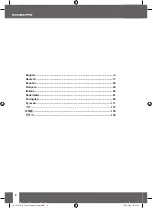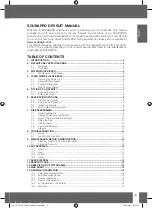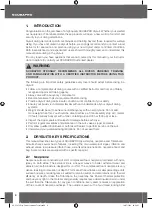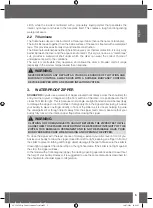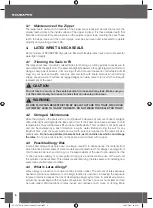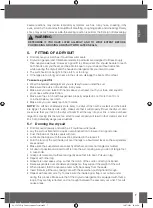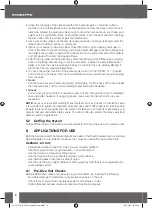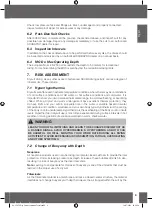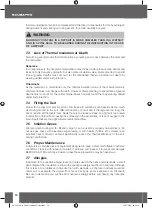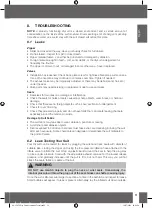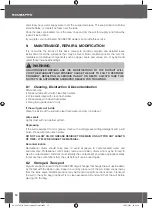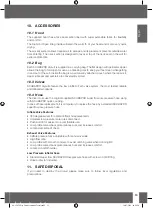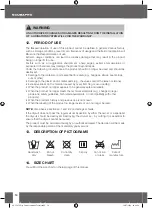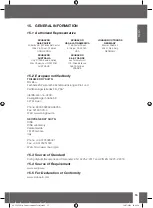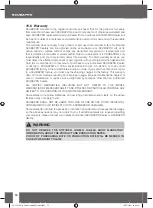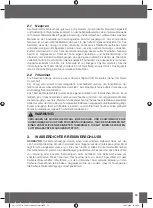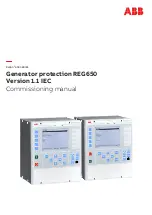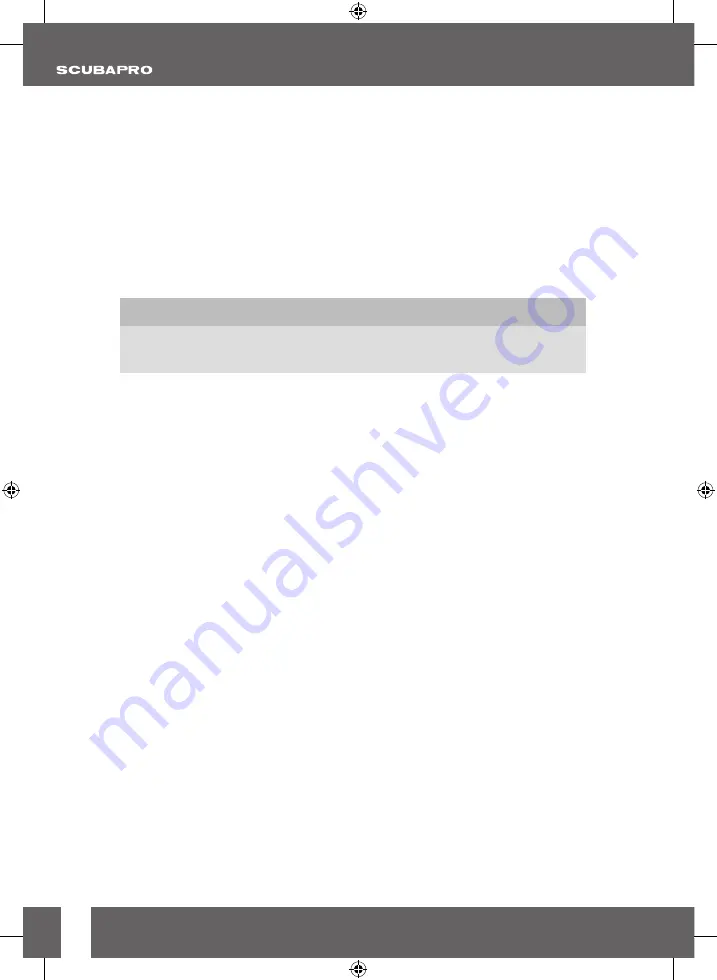
4
1. INTRODUCTION
Congratulations on the purchase of a high quality SCUBAPRO drysuit. Whether you selected
our neoprene or Trilaminate model, these products will open a new world of comfort and
security in your diving adventures.
Drysuit diving demands specific techniques and training beyond those required for wetsuit
diving. If you have not dived in a drysuit before, we strongly recommend you contact a local
instructor for education and practice using your new drysuit under controlled conditions.
Both inexperienced and experienced users should thoroughly read and understand this
manual before diving in the drysuit.
If for any reason you have questions that are not covered by this manual or your instructor,
do not hesitate to contact your SCUBAPRO Authorized dealer.
!
WARNING
SCUBAPRO STRONGLY RECOMMENDS ALL DIVERS UNDERGO TRAINING
AND FAMILIARIZATION WITH A CERTIFIED INSTRUCTOR BEFORE USING THIS
PRODUCT.
The following are important safety guidelines every diver should adopt before diving in a
drysuit:
• Follow a complete drysuit diving course with a certified instructor and from an officially
recognized approved training agency.
• Always dive with a buoyancy compensator.
• Become familiar with all your equipment before diving.
• Practice drysuit diving skills in safe conditions until confident of your ability.
• Ensure your buddy is completely familiar with and understands all your drysuit diving
systems.
• Weight should be set to achieve neutral buoyancy with an empty tank. Do not add
more weight than this. You should be able to achieve a 5 minute safety stop at 3 meters
(10 feet), neutrally buoyant with a tank containing around 30 bar (500 psi) or less.
• Inspect the zipper, seals and valves for damage before each dive.
• Perform regular preventative maintenance on the suit, valves, zipper and seals.
• Only allow qualified individuals or Authorized Dealers to perform service on the suit.
• Understand your personal diving limitations. Do not exceed them.
2.
DRYSUITS KEY SPECIFICATIONS
This manual describes two types of SCUBAPRO drysuit styles, neoprene and Trilaminate.
All suits share several basic features, including the main waterproof zipper, inflation and
exhaust valves, low pressure inflator hose, vulcanized neoprene boots, neoprene hood, and
bag. Some models are equipped with a specific repair kit.
2.1 Neoprene
Neoprene suits are constructed of 4mm compressed foam neoprene, laminated with nylon
jersey on both sides. The exterior side is a heavier weave to better withstand wear and
abrasion, while the inside is designed for comfort. The compressed foam neoprene is very
dense, resisting compression at depth. This means the suit loses a smaller percentage of its
surface buoyancy, requiring less air added to remain neutral, and also retains more thermal
efficiency at depth. Unlike the Trilaminate, the neoprene has inherent thermal protection
and buoyancy right in the material and generally requires less added insulation worn under
the suit than the Trilaminate, for any given conditions. Every seam receives an application
of three coats of neoprene adhesive. The outside is sewn with a two-thread locking blind
00-15656-Dry Suit user manual-totale.indb 4
30/07/2019 09:08:23


